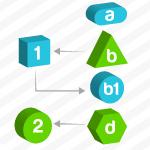 If a client machine’s CPU is over-utilized and it has only one processor, parallel processing will not improve performance; it may actually make it worse. However, if the machine has multiple processors and low CPU utilization, parallel processing will improve performance.Parallel processing occurs when sequences of code are executed simultaneously. There is some small overhead to set up and manage this process, which is why parallel processing can negatively impact performance on maxed-out computers. However, it is expected that the majority of client machines, even those with only one processor, will show performance improvements.EcmaScript’s and JavaScript’s definitions do not define any level of parallel processing. These languages are usually thought of as single-threaded, but there is some Internet discussion about how to remove that restriction.
If a client machine’s CPU is over-utilized and it has only one processor, parallel processing will not improve performance; it may actually make it worse. However, if the machine has multiple processors and low CPU utilization, parallel processing will improve performance.Parallel processing occurs when sequences of code are executed simultaneously. There is some small overhead to set up and manage this process, which is why parallel processing can negatively impact performance on maxed-out computers. However, it is expected that the majority of client machines, even those with only one processor, will show performance improvements.EcmaScript’s and JavaScript’s definitions do not define any level of parallel processing. These languages are usually thought of as single-threaded, but there is some Internet discussion about how to remove that restriction.Everything about Web and Network Monitoring









